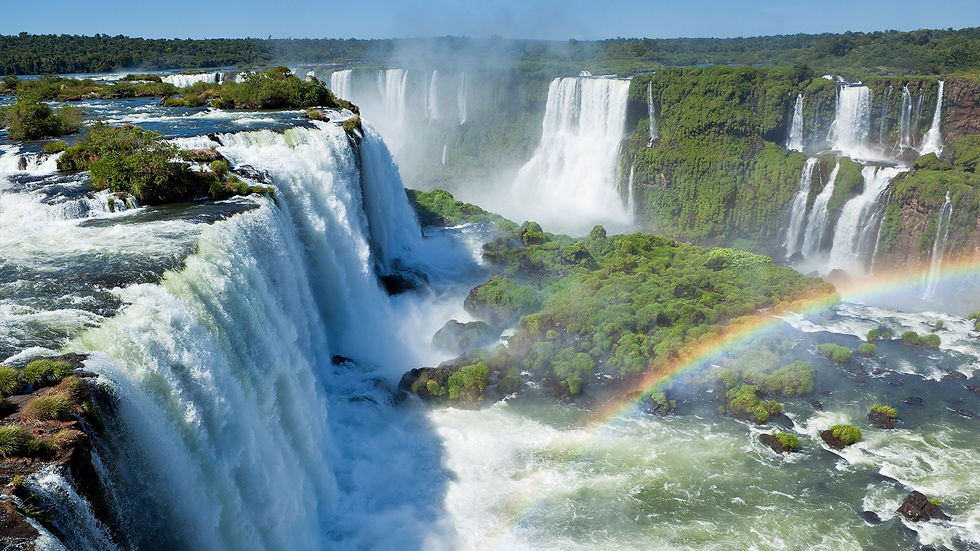
Iguazu Falls
Iguazu Falls is made up of 275 different waterfalls, all of them falling 60 to 82 meters down. The river is three times wider than Niagara Falls, and the many cataracts all separate into their own falls. The name Iguazu is derived from the Guaraní language, meaning “great water.” The Iguazu River flows west, and it eventually falls over the Paraná Plateau into the canyon below. From there, most of the river tumbles into the Garganta del Diablo, or Devil’s Throat, which is a chasm described as “an ocean plunging into an abyss.” The rate of flow during the rainy season can rise up to 12,750 cubic meters per second, and the ledges that stick out create spray. That mist can rise up to 150 meters tall, and many rainbows emerged from it. There are many islands around Iguazu Falls, but the most popular one is Isla Grande San Martín. It is downstream from the Garganta del Diablo, and has a beautiful view of the falls. Some other best individual waterfalls on the Brazilian side are Benjamin Constant, Deodoro, and Floriano. The plants are rich around the falls, with both tropical and semi-deciduous (plants that lose their leaves) found. Additionally, water plants that grow in rushing water can be found. There are many types of birds, big cats, and fish, but the fauna is much less studied than the flora. Overall, Iguazu Falls is a beautiful destination, and has many natural wonders[7].


A large waterfall cascading into the canyon
Cataracts of Iguazu Falls